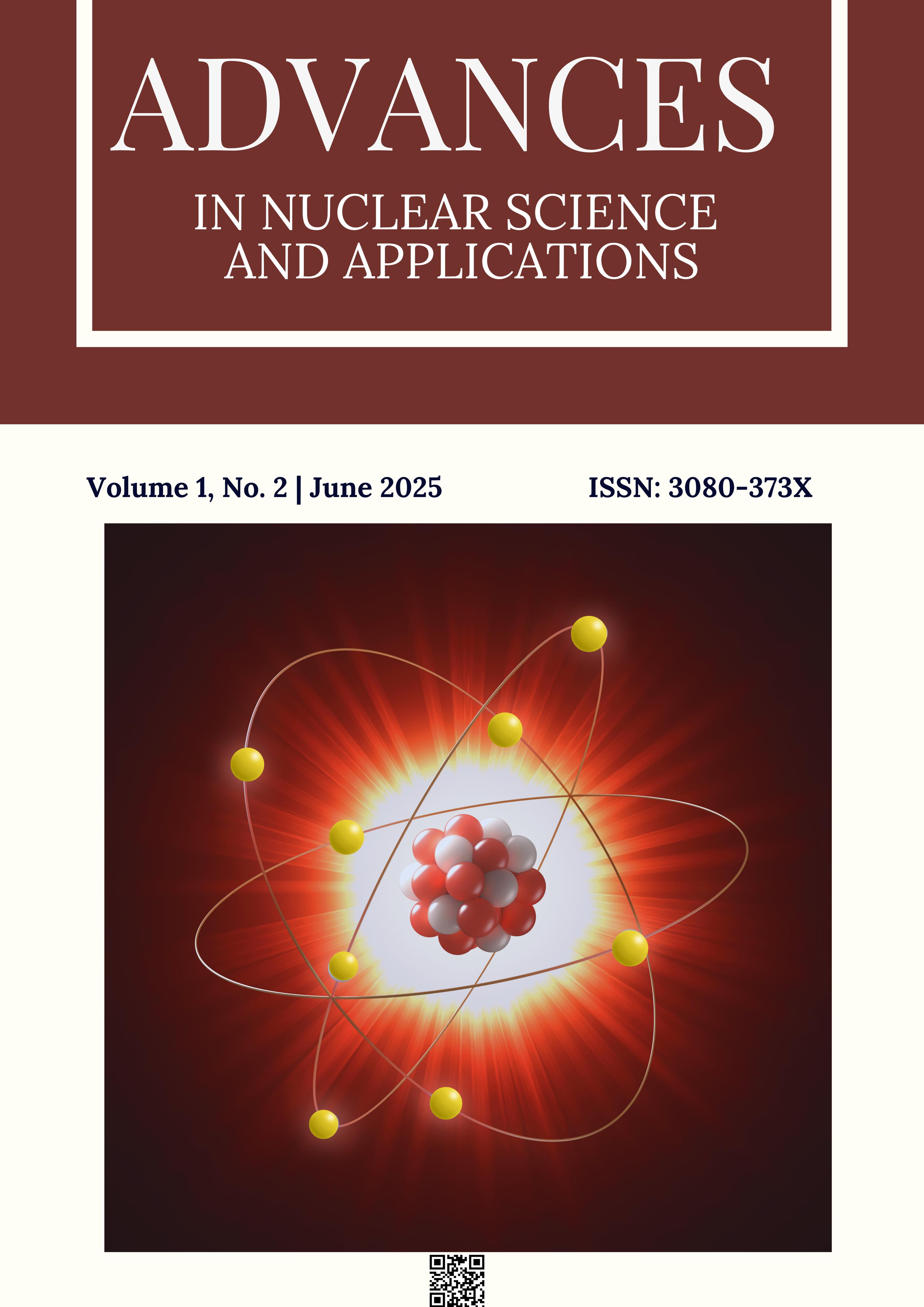Two-body mechanisms in light-ion reactions with $^9$Be
DOI:
https://doi.org/10.63907/ansa.v1i2.36Keywords:
nucleon transfer reactions, inclusive energy spectra, two-body reaction mechanism, clusters, weakly bound nucleiAbstract
Few-nucleon transfer reactions induced by light projectiles ($d$, ${}^{3}\text{He}$, and ${}^{4}\text{He}$) on the weakly bound nucleus ${}^{9}\text{Be}$ were investigated at incident energies of 26--35~MeV. Inclusive energy spectra and angular distributions were measured for outgoing fragments ($p$, $d$, $t$, ${}^{4}\text{He}$, ${}^{7}\text{Li}$, and ${}^{7}\text{Be}$), allowing reconstruction of excitation energy spectra for the complementary residual nuclei. The observed spectral shapes are consistent with discrete level populations in both bound and unbound systems, supporting a dominant two-body reaction mechanism.
Special attention was given to channels involving short-lived unbound nuclei (${^{5}\text{He}}$, ${^{5}\text{Li}}$, and ${^{8}\text{Be}}$). The extracted energy peaks and widths indicate population of these systems predominantly in their ground states. Comparisons with phase-space models and kinematic simulations exclude a statistical three-body decay scenario and confirm the formation of binary final states.
A time-scale analysis based on resonance widths yields equilibration times shorter than $10^{-22}$~s, suggesting that energy sharing occurs rapidly in these reactions. These findings support a cluster-transfer picture in which preformed configurations, such as ${}^{5}\text{He}$ and $\alpha$ clusters, are coherently transferred. The results provide new constraints on reaction dynamics and cluster structure in light nuclei.
Downloads
Published
Issue
Section
License
Copyright (c) 2025 Advances in Nuclear Science and Applications

This work is licensed under a Creative Commons Attribution 4.0 International License.






